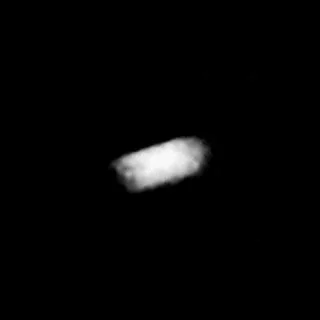Galatea
Galatea was discovered by the Voyager 2 spacecraft during its 1989 mission to Neptune. Named after a sea nymph in Greek mythology, Galatea orbits Neptune at an average distance of about 61,953 kilometers from the planet's center. This small moon, with an estimated diameter of approximately 204 kilometers, boasts an irregular shape, typical of many smaller celestial bodies. Galatea's distinctive feature is its near-synchronous orbit with Neptune, completing one orbit in approximately 10 hours and 46 minutes, believed to be influenced by gravitational interactions with Neptune's larger moon, Triton. It is thought to be a captured object, possibly originating from the Kuiper Belt or asteroid belt, drawn into its current orbit by Neptune's gravitational pull.

